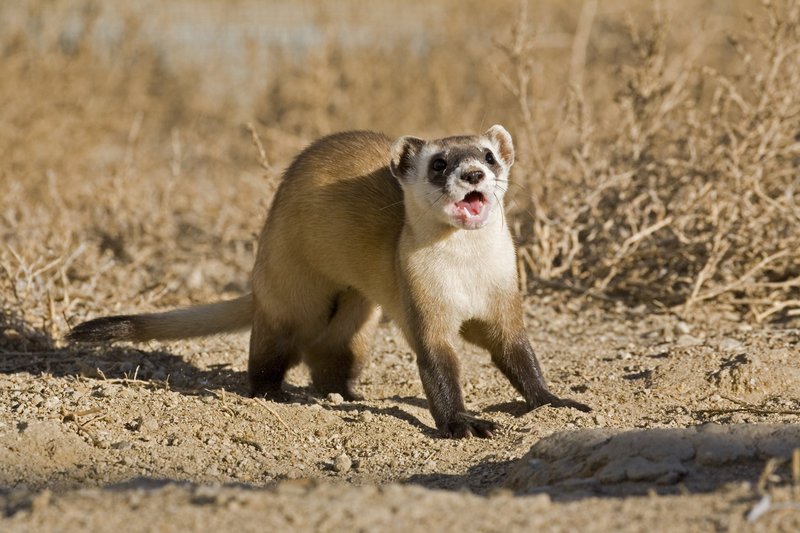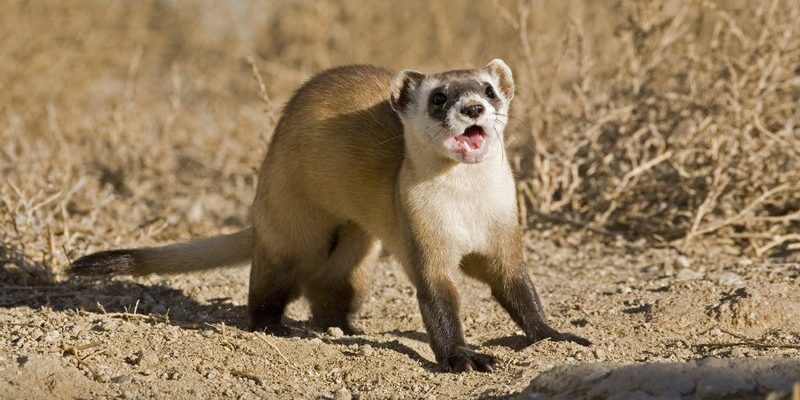
Let’s dive into the topic of whether ferrets are endangered. Honestly, it’s a conversation that brings together ecology, conservation efforts, and a bit of hope. Just like how a gardener nourishes plants to help them thrive, conservationists work tirelessly to ensure that wildlife, including ferrets, can flourish in their natural habitats. So, grab your favorite mug, and let’s explore the state of ferrets around the globe.
The Black-Footed Ferret: A Brief Overview
The black-footed ferret is a small, carnivorous mammal native to North America. Unlike its domestic relatives, this wild ferret has a sleek body, black feet, and a distinctive black mask across its eyes. These little guys are known for their playful behavior, but they also have a serious role in the ecosystem. They primarily prey on prairie dogs, which means they help keep those populations in check.
Historically, black-footed ferrets thrived in the Great Plains, but their numbers began to plummet in the late 20th century due to habitat loss and disease. Imagine a neighborhood where all the houses are knocked down—suddenly, there’s nowhere for people (or, in this case, ferrets) to live. This is a bit like what happened to the ferrets when their prairie dog towns were destroyed.
Are Ferrets Endangered? The Current Status
The short answer is yes—ferrets are endangered, particularly the black-footed variety. According to the U.S. Fish and Wildlife Service, this species was listed as endangered in 1967. Through significant conservation efforts and breeding programs, these ferrets have made a comeback, but they’re still facing challenges.
In fact, as of now, the black-footed ferret is classified as “Endangered” by the International Union for Conservation of Nature (IUCN). Think of it as being on a tightrope; they’re making progress, but there’s still a long way to go before they’re out of danger completely. Conservationists are constantly monitoring populations and habitats to ensure these unique creatures don’t slip further toward extinction.
Threats to Black-Footed Ferrets
Unfortunately, ferrets don’t just face one single threat—they have a whole array of challenges. Here are some key issues contributing to their endangered status:
- Habitat Loss: Urban development and agriculture have led to significant habitat destruction. When prairie dog colonies are removed, ferrets lose their food sources and homes.
- Diseases: Diseases such as sylvatic plague can wipe out prairie dog populations, which directly affects the ferrets that depend on them for food.
- Inbreeding: With their populations so low, inbreeding can occur, leading to decreased genetic diversity. This makes them more susceptible to diseases and health problems.
Each of these points paints a bleak picture, but conservationists are working hard to address these threats. Let me explain how they’re doing it.
Conservation Efforts for the Black-Footed Ferret
Many organizations are dedicated to saving the black-footed ferret from the brink of extinction. One of the most notable efforts took place in the 1980s when the last known wild population was captured to start a breeding program. This program, operated by the U.S. Fish and Wildlife Service, has since reintroduced ferrets into the wild.
Today, conservationists are focusing on several strategies:
- Habitat Restoration: Protecting and restoring prairie dog towns is crucial. By ensuring there are sufficient habitats, we create safe spaces for ferrets to thrive.
- Vaccination: Vaccinating both prairie dogs and ferrets against diseases can reduce mortality rates and increase survival chances.
- Public Education: Raising awareness about the plight of black-footed ferrets encourages community involvement in conservation efforts. Knowledge is a powerful tool!
These combined efforts are showing promise, and populations are slowly starting to recover, which is fantastic news!
Success Stories: The Comeback of the Black-Footed Ferret
Believe it or not, the tale of the black-footed ferret is a story of resilience. As of recent estimates, there are about 300 black-footed ferrets living in the wild, a significant increase from the 18 individuals that were released in a reintroduction effort in 1991. It’s like watching a phoenix rise from the ashes!
Locations have been established where ferrets can thrive, such as Wyoming, South Dakota, and Montana. In these areas, dedicated teams monitor the ferrets and their habitats to ensure they’re safe and healthy. Each time they spot one of these wild ferrets, it’s a little victory for conservation.
These efforts highlight how human action can lead to positive change. If we can rally together for a creature as small as a ferret, imagine what we can do for larger environmental issues!
How You Can Help Ferrets
Now that you’re aware of the situation, you might be wondering, “What can I do to help?” Thankfully, there are several ways you can get involved, even if you’re not a wildlife expert.
- Support Conservation Organizations: Donating to groups focused on ferret conservation can help fund vital research and habitat restoration projects.
- Raise Awareness: Sharing information about black-footed ferrets on social media can help educate others about their plight. Every little bit counts!
- Advocate for Wildlife Protection: Engage with local and national policies regarding wildlife conservation to ensure laws support endangered species protection.
Every action you take, no matter how small, can contribute to the bigger picture of conservation.
The Future of Ferrets: Hope Ahead
While the black-footed ferret remains endangered, recent trends are promising. Conservation efforts are enhancing their chances of survival, reminding us that with persistence, we can bring species back from the brink.
Here’s the thing: if we want to keep enjoying the playful antics of ferrets—both wild and domestic—we need to take action. Protecting habitats, supporting research, and educating others is crucial for ensuring ferrets, and many other species, can thrive in their environments.
In conclusion, while ferrets may be facing challenges, there’s a glimmer of hope thanks to dedicated conservation efforts. Together, we can help these unique creatures flourish in the wild for generations to come. So next time you see a ferret, whether in a pet store or a wildlife documentary, remember their story and what we can do to protect them.

